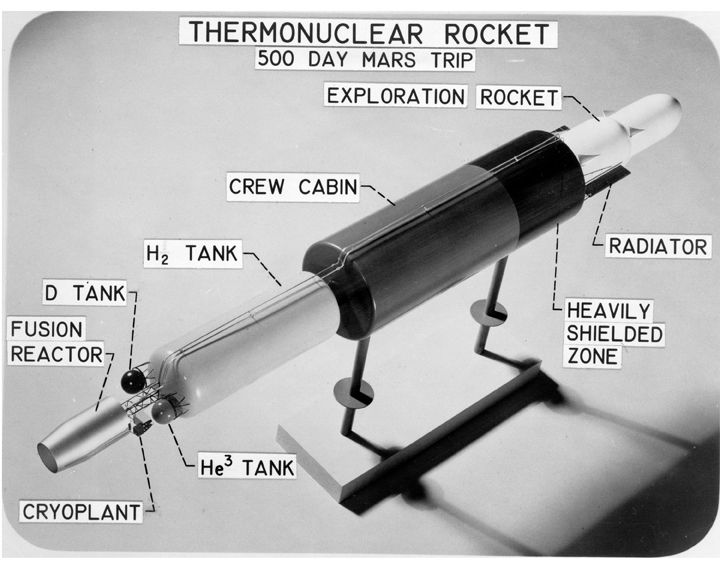Space History Photo: Model of Thermonuclear Rocket Vehicle for Exploration

In this historical photo from the U.S. space agency, a 1963 model of a thermonuclear rocket capable of interplanetary exploration. The reactor was used to heat up liquid hydrogen for thrust similarly to traditional rocket engines. The large heavily shielded zone between the reactor and the crew cabin protected the astronauts from the radiation.
For more information browse the Plum Brook Facility Page.
Each weekday, SPACE.com looks back at the history of spaceflight through photos (archive).
Get the Space.com Newsletter
Breaking space news, the latest updates on rocket launches, skywatching events and more!
Join our Space Forums to keep talking space on the latest missions, night sky and more! And if you have a news tip, correction or comment, let us know at: community@space.com.

The National Aeronautics and Space Administration (NASA) is the U.S. government agency in charge of the civilian space program as well as aeronautics and aerospace research. Founded in 1958, NASA is a civilian space agency aimed at exploring the universe with space telescopes, satellites, robotic spacecraft, astronauts and more. The space agency has 10 major centers based across the U.S. and launches robotic and crewed missions from the Kennedy Space Center in Cape Canaveral Florida. It's astronaut corps is based at the Johnson Space Center in Houston. To follow NASA's latest mission, follow the space agency on Twitter or any other social channel, of visit: nasa.gov.









